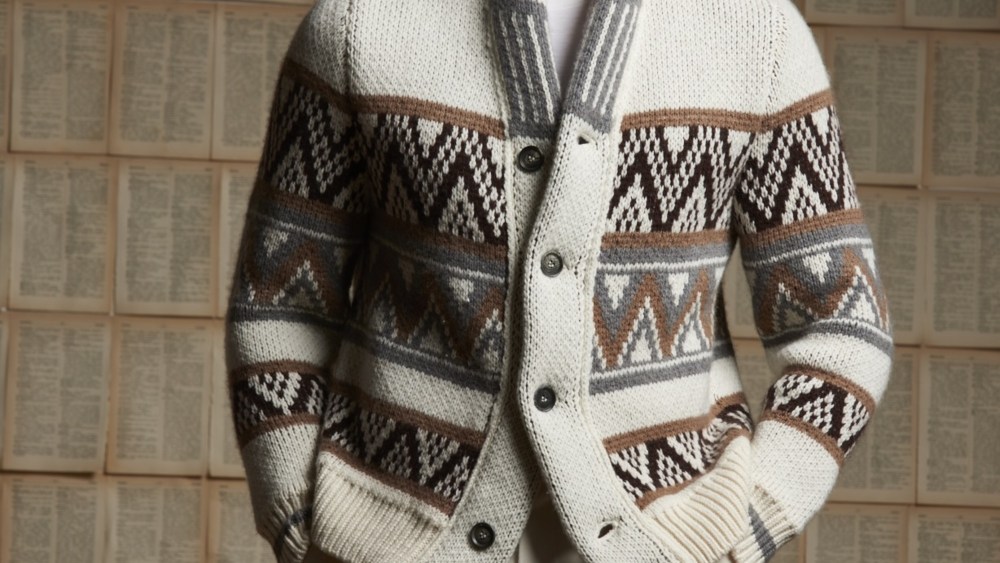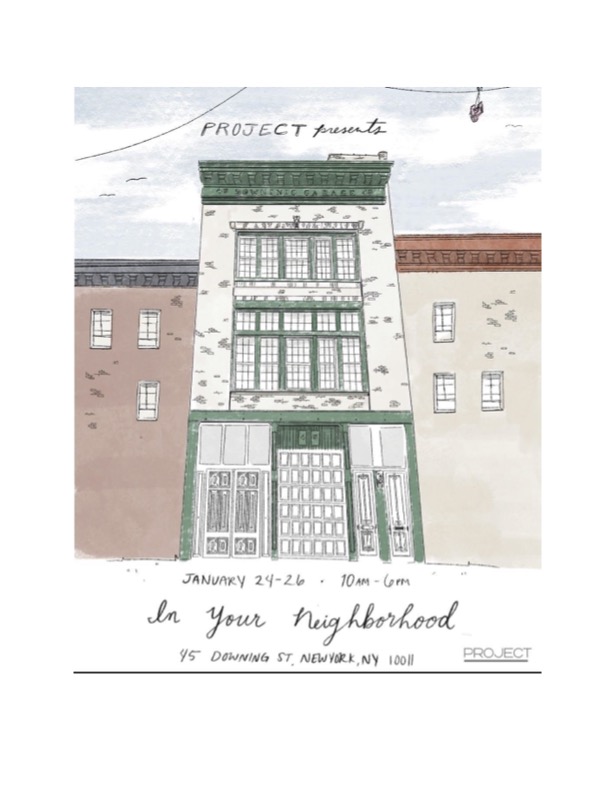Isaia is ready for a higher profile.
That’s the opinion of Gianluca Isaia, chief executive officer of the family-owned Naples, Italy-based luxury menswear company.
On Sunday, Isaia will hold a runway show at Circolo Filologico Milanese, Via Clerici 10, only the third show in the company’s 105-year history. But with a new creative director on board — Damiano Biella — a solid presence at retail and a full womenswear collection to showcase for the first time, the company believes the time is right.
“I feel today the collection is strong enough, and the women’s is strong enough to be mixed with the men, even if it’s only maybe 30 or 35 percent of the looks,” he said.
You May Also Like
He has never been a fan of a men’s-only show, Isaia said, but the addition of the womenswear will make for a more compelling presentation. “It makes much more sense to do it.”
Although it’s known almost exclusively as a menswear label, Isaia actually started producing womenswear in the 1990s — mainly jackets and blazers — and it was a “huge success in Germany,” Isaia recalled. In fact, it grew so fast that in around five years, it represented 30 percent of the total business.
But one day, a popular fashion influencer of the time made a pronouncement that blazers for women were passé, and the business crashed.
“We went from over 100 wholesale accounts in Germany to 15 in one season,” he said. “And because we were producing everything [ourselves] we lost a lot of production. It was very, very tough. So I said: ‘Women’s? Never again.’”

But time heals all wounds and he reconsidered.
“I spent a lot of years without even thinking about a women’s collection, but I feel we are a much stronger brand than we were in in the ’90s,” he explained. “We have our own strong identity and a lifestyle in the collection that is not just about product. Also, a lot of girlfriends and wives of our customers would always ask us to we something, so I said, OK, but let’s do it in the right way.”
For Isaia, the right way is to offer the nascent collection in its own stores only and not wholesale it. “Maybe in the future, but not today,” he said of the strategy. “I want to keep it very, very exclusive.”
Another difference in this move back into womenswear is that it’s being designed by Biella, whose background includes stints at Gucci, Celine, Carolina Herrera, Escada and other brands. “And it’s more than blazers,” Isaia said with a smile. The collection will offer a wide range of categories and will reflect the brand’s strength in tailoring with a distinct Neopolitan aesthetic, but with a feminine edge. The palette will range from plum, tea rose, gray, camel and tobacco to peacock blue, chocolate and ivory. Black is used only for eveningwear. The range will include blazers, oversize coats and masculine-cut trousers as well as knitwear with intarsia and hand-embroidered details. The collection’s “must-have piece,” according to the company, is a cashmere maxi cape.
Although womenswear, which was reintroduced in a small way a couple of years ago, still represents less than 10 percent of the company’s overall sales, which are around 100 million euros, “I think looking forward, it can become 30 to 40 percent of our total turnover,” he said. “It will take some time. It will take a lot of investments.”
Because the women’s collection will only be carried in its own stores, it will require some rejiggering of the layouts of the 22 units to carve out space. In the new stores that the company plans to open, Isaia will have dedicated womenswear departments. A potential goal in the future, he revealed, is to one day open women’s-only stores. “It will take some time and we have to be patient,” he said, as he waits for customers to discover the women’s collection.
Isaia is confident the collection will do well thanks to Biella’s rich experience. “He’s doing mostly women’s but he’s working on the men’s as well — especially on the sportswear side,” he said. “He comes with long experience in luxury business. He worked with Valentino, he worked with Tom Ford, he worked with Carolina Herrera, and he joined us a year and a half ago. I put him under a lot of pressure, making so many collections in a very short time.”
The Milan show will mark Bella’s runway debut for Isaia. The fall collection will pay tribute to writer and actor Luciano De Crescenzo and his 1984 comedy film, “Così parlò Bellavista.”
“Luciano De Crescenzo was not just a writer but a cultural mediator,” said Isaia. “Through his works, he made complex concepts accessible, bringing them to life with brilliant simplicity. With this collection, we aim to celebrate his spirit of curiosity, humanity, and love for knowledge.”
For the show at Circolo Filologico, the cultural center will be transformed into a literary salon inspired by Bellavista’s home, the company said. Quotes and phrases from De Crescenzo’s work will accompany the presentation.
The menswear offering will feature bold and masculine colors such as burgundy, gray, camel, cognac, chocolate, peacock blue, cream and military green. Eveningwear will be in black, chocolate and navy. The offering will be centered around coats and jackets and will include duffle coats and maxi coats in double cashmere, alpaca and bouclé fabrics. Knitwear in cashmere with intarsia patterns and three-dimensional textures along with napa and suede bombers, shirt jackets and tailored blazers will be shown along with a red wool duffle coat that is being billed as the star of the show.
“In a world where fashion often chases fleeting trends, only to be swept away by the next, we face a choice: age out or become timeless,” said Biella. “We choose to become timeless. We’re inspired by Luciano’s way of honoring tradition not by freezing it in the past, but by making it dynamic, universally relevant, alive and timeless. It’s about a spirit that never fades, about style that resonates across generations.”

The collection that will be shown on the runway was made almost exclusively in the company’s own factories. Isaia said during the pandemic, the company made the big move to bring nearly all its production in-house. Although the tailored products had always been made internally, the jerseys, denim, sportswear and leather goods had been outsourced. Only shoes continue to be made outside the Isaia factory. “I feel more confident because if we are selling more blue sweaters, I can just make more,” he said.
In addition, in-house production allows Isaia to have more control over the quality of the offering and better serve its customers. For instance, he said, the company can now produce made-to-measure jeans or sweaters in addition to its core suit or outerwear offerings.
In addition to the fashion show, Isaia is focused on increasing its retail footprint. The company now operates seven stores or shops in the U.S. as well as units in London, Milan, Rome, Toronto, St. Moritz, Tokyo, Saudi Arabia and other countries.
Isaia said the during the pandemic, the company opened five stores, which he acknowledged was “risky.” But the company had already secured financing from its banks for the rollout and although the banks asked for the money back, he declined and used it to open in Miami, Chicago, Toronto, London and St. Moritz.
“They helped us so much,” he said, “because they give you a lot more margin.”
Today, Isaia’s direct-to-consumer accounts for 55 percent of sales and the company plans to open another six or seven stores in the next three years, he said. Tops on the list are Dallas; Las Vegas; Washington, D.C.; Dubai; Paris, and Zurich.
He said the U.S. remains the company’s most important market and the plan is to open units where the brand doesn’t have a big presence.
He stressed that wholesale remains an important part of the business and aids in brand awareness, but having stores allows the company to display the full breadth of the collection and also communicate directly with customers.
Perhaps that’s why, he claims, Isaia is doing well. “I call it tangible luxury,” he said. “We are part of a niche of luxury where there is a lot of quality in the product and real service, not just marketing.”



